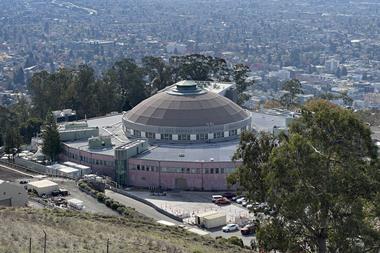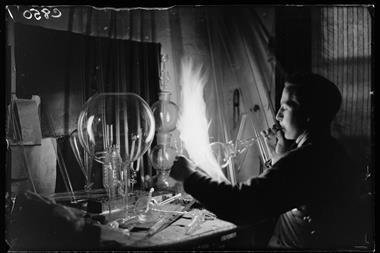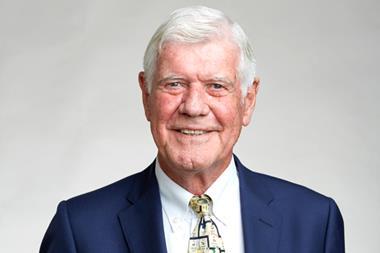Readers stand up for school technicians, share concerns about fireworks and speculate about element 121
School technicians overlooked
Once again, school technicians are being left behind, ignored, forgotten and left for dead. The whole impetus is solely focused on higher education and industry technicians as demonstrated by projects such as UK Research and Innovation’s Technician Commitment or the Science Museum’s Technicians exhibition, where not a single school technician was represented in the interactive gallery so children who have never seen those kinds of techs could relate to any of them.
Not surprisingly, school technicians are leaving the profession, especially experienced and skilled techs who have given much more than their job descriptions over years to improve the education of science and design and technology. Although rewarding, reasons given for leaving such as lack of recognition, adequate pay and managers or administrators not understanding what the job entails are not uncommon.
To make matters worse, there are no incentives to attract new candidates. Application numbers have dropped dramatically over the last few years to the point almost of schools considering not having a school technician at all.
As an Institute of Physics Secondary Education Technician award winner I know all this too well. Having to fight my way to achieve recognition and being a strong advocate for techs has not been easy. Simon Fitzgerald’s recent letter seems to imply that school technicians don’t even exist.
School technicians are training teachers on how to deliver safe practical lessons every day, they inspire children to study Stem subjects by running science clubs, outreach events for the public, organise conferences and competitions, the list goes on and on…
It is so sad, not realising the potential energy that you already have in most schools and not protecting it at all costs or embracing it so it can grow into something that will benefit everyone further up the chain, be it in college, university or industry. Such a missed opportunity not to include secondary techs in those projects. You have to build a strong base so that the top does not crumble and fall to its demise.
Andres Tretiakov
Via email
The opinion piece by Catharine Jackson sparked me to comment on social media as it linked neatly with what I am trying to achieve with practical work in schools. But Simon Fitzgerald’s letter caused me to ignite!
Where is our UK technician talent coming from? Our schools are there to enthuse our students. If students go on to any form of apprenticeship or tertiary education in science, it is the passion and enthusiasm passed on by the teacher that is responsible.
But just as there is technician assistance in research teams in industry and academia, there is technical help for the teacher. Otherwise, how could teachers deliver a full timetable of lessons, with many involving chemicals and equipment, often requiring a long preparation time, problem-solving why experiments do not go as planned, offering technical and safety advice, purchasing and organising the stores and managing disposal requirements?
School science and design and technology technicians are the first technicians the students will be familiar with. Suppose they are seen by students to be poorly treated, paid barely above the minimum wage on term-time contracts even if they have PhDs and with no unified career structure. In that case, students will feel that being a technician is not an area of work to consider when they leave school.
Every school runs a different management structure. Often, managers with non-scientific backgrounds regard the technicians’ position as superfluous and refer to them in a derogative fashion.
I have been fortunate to have had excellent technicians at school and at Cleapss. I urge that the UK Institute for Technical Skills and Strategy widens its brief into the secondary education sector as well.
Bob Worley FRSC
Senior adviser with Cleapss
No smoke without fireworks
November and December mark festive seasons in the UK, with widespread fireworks displays to celebrate Guy Fawkes Night, Diwali Festival, Christmas and New Year. It’s a season of joy! However, the accessibility of fireworks to the general public has become nearly limitless, leading to excessive usage without adequate consideration for potential consequences to personal health, the environment and wildlife.
Firework displays release various chemicals, including harmful gases, heavy metals, toxic compounds and nano- and micro-particulates, all of which pose significant health risks, particularly for individuals with underlying respiratory conditions like asthma and chronic obstructive pulmonary disease. In the current era of global warming, climate change, and our collective efforts to reduce carbon footprints, one must question the necessity of fireworks.
A cursory review of existing research literature yields a few studies conducted outside the UK, highlighting the detrimental effects of fireworks on both human health and the environment. I believe that research is needed from environmental chemistry scientists in the UK to evaluate the potential impact of fireworks and, perhaps, to provide recommendations to the government regarding restrictive measures for the public’s use of fireworks.
Vitaliy Khutoryanskiy FRSC
Reading, UK
Elemental analysis
I look forward to congratulating scientists on announcing success in making elements 119 and 120. There will be no controversy in assigning these to group 1 and group 2 under francium and radium respectively.
Scientists will not stop here and may already be working on element 121 and above. Where in the periodic table should 121 go? Will it be a member of the f-block? The pattern of the table would suggest otherwise.
The third element in every even row starts a new block. In the second row aluminium is the first p-block element. In row 4 scandium is the first d-block, in row 6 lanthanum is the first f-block. So in row 8 the third element, 121, should be the first in a new block. The m-block perhaps?
How many elements will there be in the m-block, assuming it will ever be possible to make them? Again the pattern in the table can give an answer. There is one pair of elements in the s-block: three in p; five in d; seven in f. A simple arithmetic progression, so nine pairs (18 elements) in this new block.
Michael Preen MRSC
Keyworth, UK












No comments yet